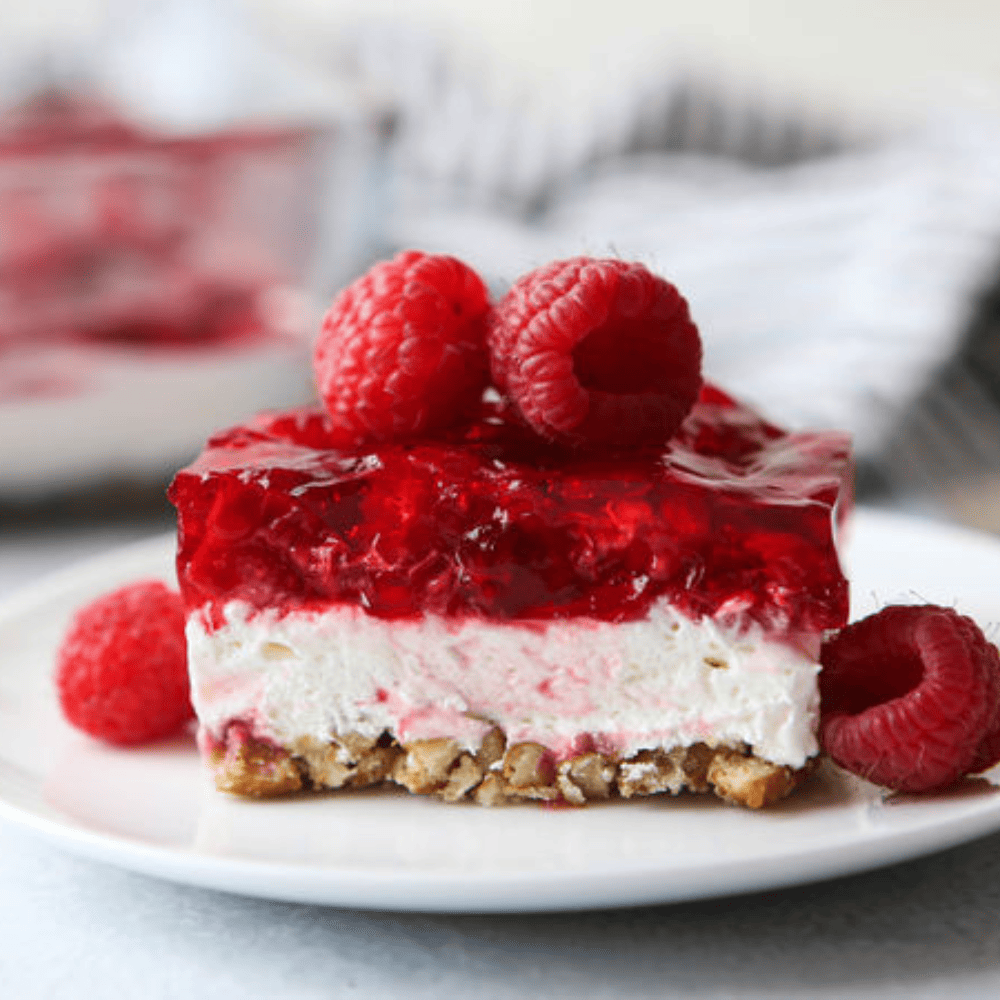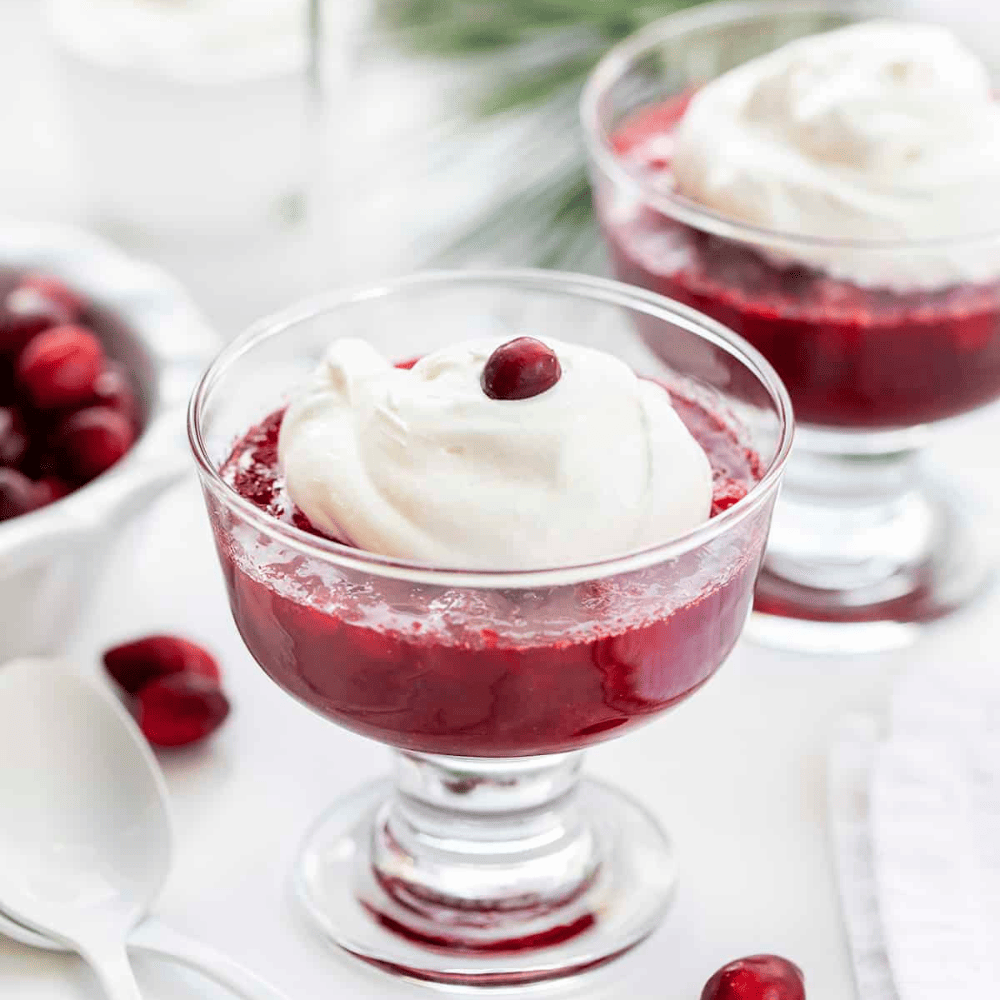
Jell-O desserts have made a surprising comeback in recent years, with aspiring chefs and creative home cooks exploring their potential beyond the classic treats. These easy-to-make desserts are not only delicious but also offer a wide range of flavors and colors to impress your guests without any stress. From mini lemon cheesecakes to striped panna cotta parfaits, here are five Jell-O dessert recipes that will elevate your culinary repertoire.
Mini Lemon Cheesecakes

One of the standout recipes is the mini lemon cheesecakes, a make-ahead and no-bake delight that will be the star of any gathering. With a vanilla wafer cookie crust, creamy lemon-flavored filling, and a touch of raspberry garnish, these individual treats are both refreshing and visually appealing.
Berry Tropical Jigglers
If you’re looking for a tropical twist, then berry tropical jigglers are a perfect choice. With layers of strawberries, mango, and coconut, these elegant treats are as delightful to look at as they are to eat. The layering technique allows you to showcase the vibrant colors of the fruits and create a visually stunning dessert.
Striped Panna Cotta Parfaits

For a patriotic-themed dessert, try striped panna cotta parfaits. These red, white, and blue treats are made with refrigerated coconut-flavored coffee creamer and offer a creamy and indulgent experience. The layers of flavors and colors make them a perfect choice for summer gatherings and celebrations.
Raspberry Cheesecake

If you’re a fan of raspberries, the raspberry cheesecake is a must-try. With a buttery vanilla wafer crust and a creamy raspberry-flavored filling, this no-bake cheesecake is a true showstopper. Topped with fresh raspberries and a raspberry gelatin glaze, it will impress both your eyes and taste buds.
Cranberry & Cream Parfaits

Lastly, cranberry and cream parfaits offer a tangy and refreshing option. Combining cranberry gelatin, juicy berries, and creamy whipped topping, these parfaits are a perfect balance of flavors and textures. Customize them with additional whipped topping, strawberries, and mint for an extra touch of elegance.
Tips to Remember
When working with Jell-O desserts, it’s important to adjust the recipes according to any dietary restrictions or preferences. These recipes provide a starting point for your culinary creativity, and you can explore different flavors, variations, and garnishes to make them your own. Remember, Jell-O desserts are not just nostalgic treats from the past; they’re versatile and delicious options that can elevate your dessert game. So grab your Jell-O boxes, gather your ingredients, and get ready to impress your guests with these easy, colorful, and delightful dishes.
Nutrition for Kids – A Short Age-By-Age Might Be Useful
Everyone wants to do their best to raise healthy and happy children. It’s important to pay frequent visits to your family physician to make sure you’re providing your little ones with the nutrition that they need to thrive. These are some of the top nutrients kids should be consuming regularly!
Good Nutrition Starts With Vitamin D
Vitamin D supports bone health, reduces inflammation, and improves immunity. Our bodies can produce vitamin D during exposure to the sun, but it’s also found in vitamin D-fortified milk, fortified cereals, salmon, and trout.

Mother’s milk doesn’t provide vitamin D, so kids from 0-6 months old and during infancy might require a supplement. Discuss this with the family pediatrician. Introducing vitamin D-rich foods into the nutrition of toddlers, young children, and teenagers becomes much easier.
Don’t Forget Omega 3
This is an essential fatty acid and one of the main nutrients required for fast brain development in the first two years of life. Past that point, Omega 3 remains very valuable for healthy eye function, the cardiovascular system, and the central nervous system. It’s found in chia seeds, flaxseeds, canola oil, sardines, salmon, walnuts, mackerel, and herring.

As mother’s milk and formula contain Omega 3 DHA, babies 0-6 months and infants usually receive a sufficient amount. Toddlers and young children need 0.7 to 0.9 grams of Omega 3 per day, and past the age of nine, the proper intake goes up to 1 or 1.6 grams a day.
Calcium for Growing Bones
Calcium is most famously known for building strong teeth and bones. It’s found in cow’s milk, cheese, yogurt, broccoli, almonds, spinach, kale, and fortified plant-based milk.

Mother’s milk and formula contain good amounts of calcium. After six months, think of introducing broccoli, tofu, or yogurt. Toddlers and young kids need 700-1000 milligrams of calcium per day. At the age of nine and older, the requirements increase to 1000-1300 milligrams.
Serve Zinc and Iron-Rich Foods
Zinc is important for proper wound healing and a good immune system. Iron helps the body produce energy and carries oxygen in red blood cells. It’s also needed for brain development and growth. Both these minerals are found in meat, fortified cereal, certain legumes, and other sources.

After six months, start introducing some iron and zinc-rich foods. Make sure that these minerals stay regular in your child’s nutrition up to and past the age of nine.
Provide Enough Potassium
Potassium is an electrolyte mineral that regulates the level of fluids in cells, helps muscles contract, aids nerve function, and helps maintain a regular heartbeat. It’s bountiful in bananas, potatoes, oranges, grapefruit, spinach, and other sources.

A well-balanced diet should provide all the nutrition a growing child needs, but an occasional checkup and conversation with the family pediatrician is a good idea!
